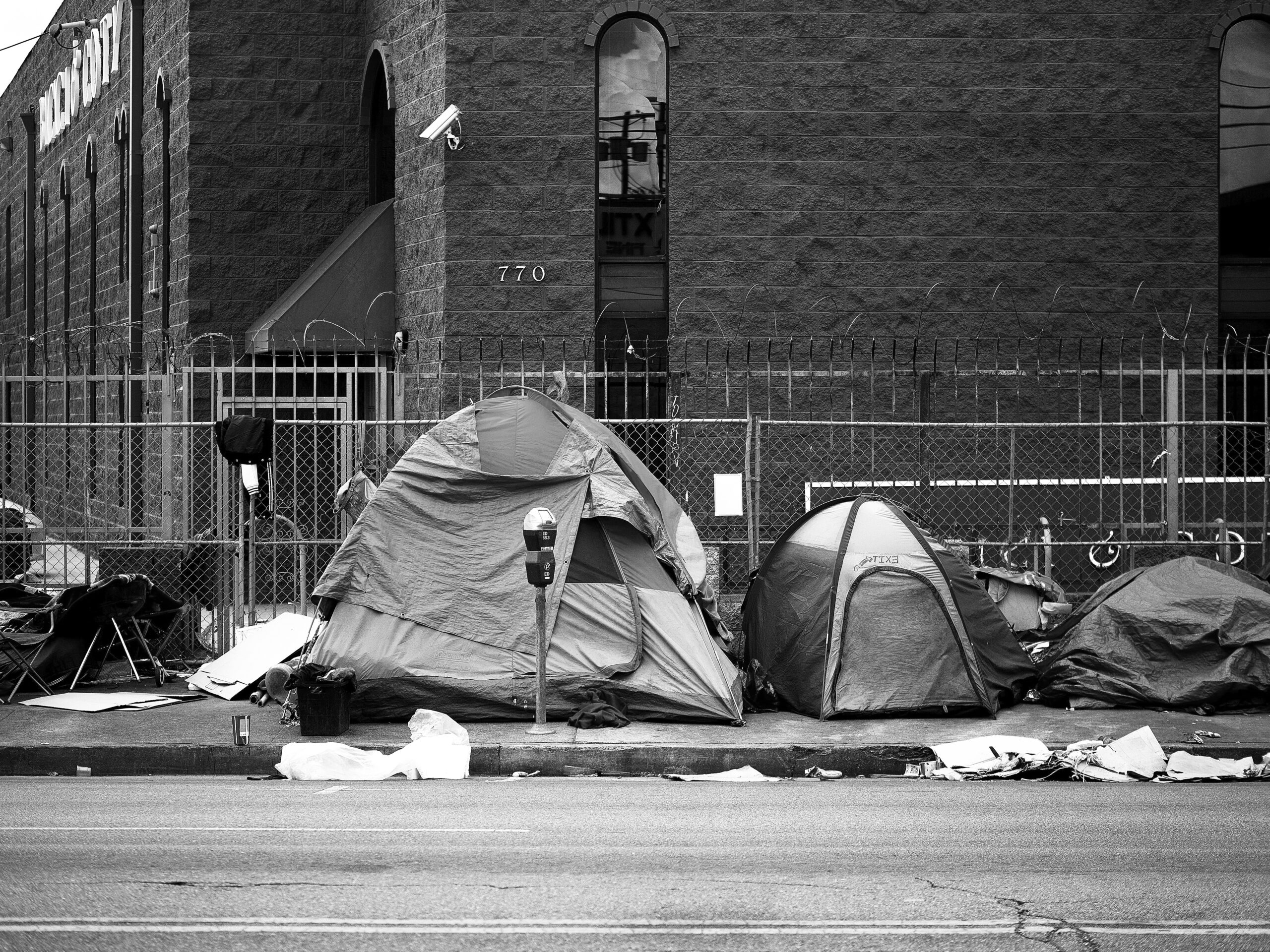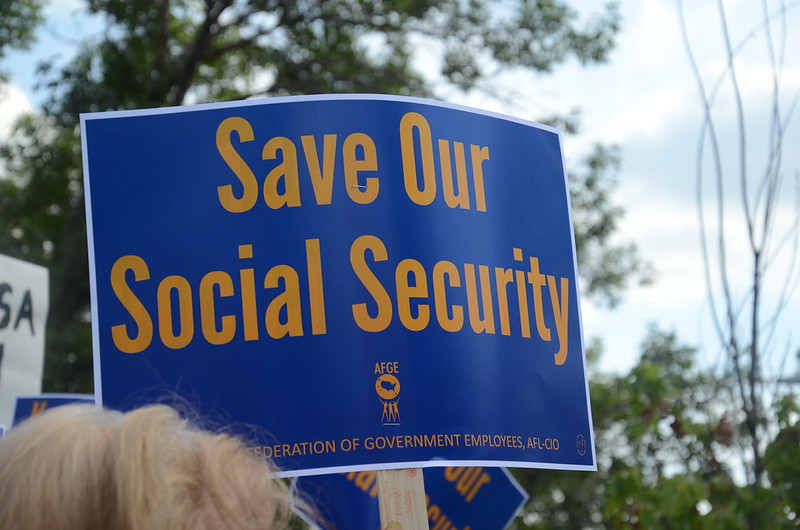
When it comes to disability rights, California is in a crisis.
On one hand, the state boasts some of the most steadfast disability advocacy in the country. The longest running independent-living center in the U.S. calls Berkeley home. It was a group of (largely) California-based activists who started the disability-justice movement. And it’s the Golden State that is often thought of as being at the forefront of progressive policy. On the other hand, California has a governor, in Gavin Newsom, who has both a disability and a spotty record when it comes to disability policy supports for unhoused people.
The epicenter of that poor policy, according to advocates, is in his approach to the unhoused population and those in dire need of mental-health support. Newsom recently announced a model ordinance structure that would limit the ability of unhoused people to congregate. Critics, like California’s ACLU, have labeled it “inhumane.” Newsom, meanwhile, has called it a policy rooted in “humanity.” As part of that model, Newsom’s office bragged about clearing over 16,000 encampments from 2021 to 2025. The model ordinance includes provisions to seize personal property for 60-plus days, which includes adaptive equipment like wheelchairs, and requires unhoused people to move periodically to avoid consequences.
California’s approaches to clearing the streets has a dark disability history. City ordinances, now known as the Ugly Laws, were first created in 19th-century San Francisco and spread to other cities like Chicago, New Orleans, Portland and Denver. In an era where begging was one of the few ways Disabled people could get money, these acts deployed a broad term of “certain persons” as a means to remove unhoused and Disabled people from the public eye. They are known as the Ugly Laws because they largely focused on those who were visually disabled. The last such law in the U.S. was not taken off the books until 1974.
Today, Newsom has repeatedly claimed that he’s made a substantial reduction in the unhoused population, and has continually made homelessness a key pillar of his political campaigns. In fact, the unhoused population has risen by 30,000 since 2019, the year Newsom took office, according to Stanford’s Hoover Institution. Recently, the governor’s rhetoric has taken a darker tone, blaming local officials and threatening to withhold state funding– which is not the first time he has done so—if they don’t reduce their unhoused populations. In July, the Trump Administration followed California’s lead, with the president issuing an executive order to restore civil commitment procedures and address what Trump calls “endemic vagrancy” by enforcing prohibitions on conditions related to houselessness such as urban camping and squatting, loitering and substance use.
With those moves, the question remains: is Newsom listening to those in the community who are facing barriers to care?
According to Andy Imparato, who leads Disability Rights California, the answer is a resounding no.
“In my 30 plus years doing disability advocacy, I’ve never seen a Democrat refuse to talk to the people that he’s trying to help,” Imparato told DJA, “And Governor Newsom refused to talk to the disability community, the mental health care community, the leading advocates for unhoused people in the state. He wouldn’t talk to anybody who didn’t agree with him on the issue.”
And if you want proof, all you have to do to understand this is look at Newsom’s CARE Court initiative, activists say.
What is CARE Court?
First introduced in 2022, the Community Assistance, Recovery, and Empowerment Act established CARE courts and a procedure where petitioners—ranging from family members to first responders to judges—can request that a care plan or order be put in place for an individual. Supporters of the legislation say that CARE court provides a robust system for those facing houselessness, mental-health concerns, and substance-use barriers. Opponents, like Imparato, call it another version of promoting institutionalization, adding that the system may well hurt more than it helps.
“We felt that that was an untested and dangerous idea, and if the goal was to prioritize people with schizophrenia and psychosis for housing and for voluntary mental-health services, then do that,” he said. “But don’t put them under the jurisdiction of a court and don’t force them to do stuff that they don’t want to do, at least until you’ve tried the voluntary stuff.”
Disability Rights California was part of a large coalition fighting CARE Court, a group that included a broad slate of national and state civil-rights and advocacy groups. Meanwhile, when Newsom’s administration began implementing CARE Court in late 2022, his tone was jubilant.
“CARE Court means new hope for thousands of Californians with untreated mental health and substance-abuse issues… Today, our work begins to turn promise into practice. While we watch other places in America move swiftly towards more involuntary hospitalization, in California, we’re doing it the right way – community based care, a focus on housing, and accountability for everyone involved,” he said at the time.
For mental-health support system workers, there is a feeling that, while the program could provide some benefits, a number of pitfalls stand out.
Angeleena Francis is vice president of operations for AMFM Healthcare, a mental-health service provider with deep roots in the state. She feels a shift away from independence and towards control, a marked change from the independent-living approaches that have dominated best practices for decades.
“It almost feels like a pendulum swing, like in the 80s when we’re like, ‘institutional facilities for mental health is inhumane [as a concept]. Let’s do away with that and make community-based programs,” Francis said.
That change in mindset has been hugely beneficial; going backward could be perilous. Specifically, Francis points to the effects of eliminating in-community resources, including infrastructure such as treatment and housing. For her, this creates a system where the burden of responsibility falls back on the person requiring support.
Under that scenario, she says, “Somehow, they’re at fault for not being able to navigate and be successful in that environment. I think there’s a tendency to tighten things back up and move back to an institutional, more prescribed, and we-know-best-for-that-individual [approach] rather than creating a system that individuals can navigate and drive themselves.”
Brooke Bardin, the director of clinical quality assurance at Victory Starts Now, an organization that works to defer those with severe mental health concerns from the legal system, says that although CARE court is an interesting concept it may be ineffective if people feel coerced. She also feels that the program doesn’t have a clear implementation plan.
“I think there are some people, just by knowing that the court is monitoring them and they’re checking in, that will probably get in line and take the resources and it’ll create some meaningful change for them,” Bardin said. “And then there might be other people who realize it’s civil court and really there’s nothing you can do.”
What Does Community Care Look Like?
Newsom’s approach may seem odd given that he is disabled. According to an article published by Yale, his journey with his identity was hampered in a way that is common within the Disabled communities: his mother hid his diagnosis from him. Newsom has written about his experience via a children’s book, and he joins a number of political leaders of various political leanings—most notably Texas Gov. Greg Abbott—as high political officeholders with a disability.
However, the history of community-based living and care has a far longer history than two governors on opposite sides of the aisle. While the Americans with Disabilities Act created a wide range of legal changes, it only set the stage for the 1999 Olmstead decision, a Supreme Court case that enshrined the right for Disabled people to have state-funded support in the community rather than being relegated to institutions. Enforcement of Olmstead has continued to be a sticking point. In 2019, for example, a federal court ruled that the state of Mississippi’s mental-health system violated federal law by excluding “adults with SMI [serious mental illness] from full integration into the communities in which they live, and work.” Currently, Olmstead-related cases include parties in at least 24 states.
Tatiana Fassieux, the Medicare education and training specialist for California Health Advocates, has been advocating for Medicare patients for more than 30 years. She says that she’s not sure Newsom understands the needs of the Disability community and that focusing on cost savings leads to poorer health outcomes for Disabled people.
“The profit factor of health care, specifically in the managed-care environment, is a contributor to potentially loss of life, however you look at it, because the individual may not be capable of making informed decisions. And we are finding that in the abuse of hospice benefits, which if you look at it, could be a component of how one would look at eugenics,” Fassieux said.
Fassieux says she’s seen cases of managed-care providers putting people on hospice unnecessarily, without their family or care system’s knowledge. She sees this as part of a pattern where the state, and the country as a whole, have failed to recognize health as a fundamental right and see Disabled people as vulnerable to exploitation whenever it’s time to balance the budget.
“The administration and the legislators will always look for the least point of resistance…It is [up to] the Disability community and others such as ours that support the disability community to show the negative rippling impact of that.”
Therein lies the fear from advocates: in a world where Republicans are implementing wholesale cuts to programs that support Disabled people, the California Democrat-backed work requirements, food stamp cuts and CARE Courts represent a similar folly that are unlikely to meet their goals.
More DJA Coverage
Dave Kiley isn’t particularly interested in being your inspiration. How do I know? I’ve read his book. Kiley and...
By
December 7, 2025
On Nov. 13, a small team of advocates for people with disabilities stepped through White House security and into...
By
November 24, 2025
In this series, DJA journalists share their experiences and tips for getting their work done, how they find the...
By
November 11, 2025


